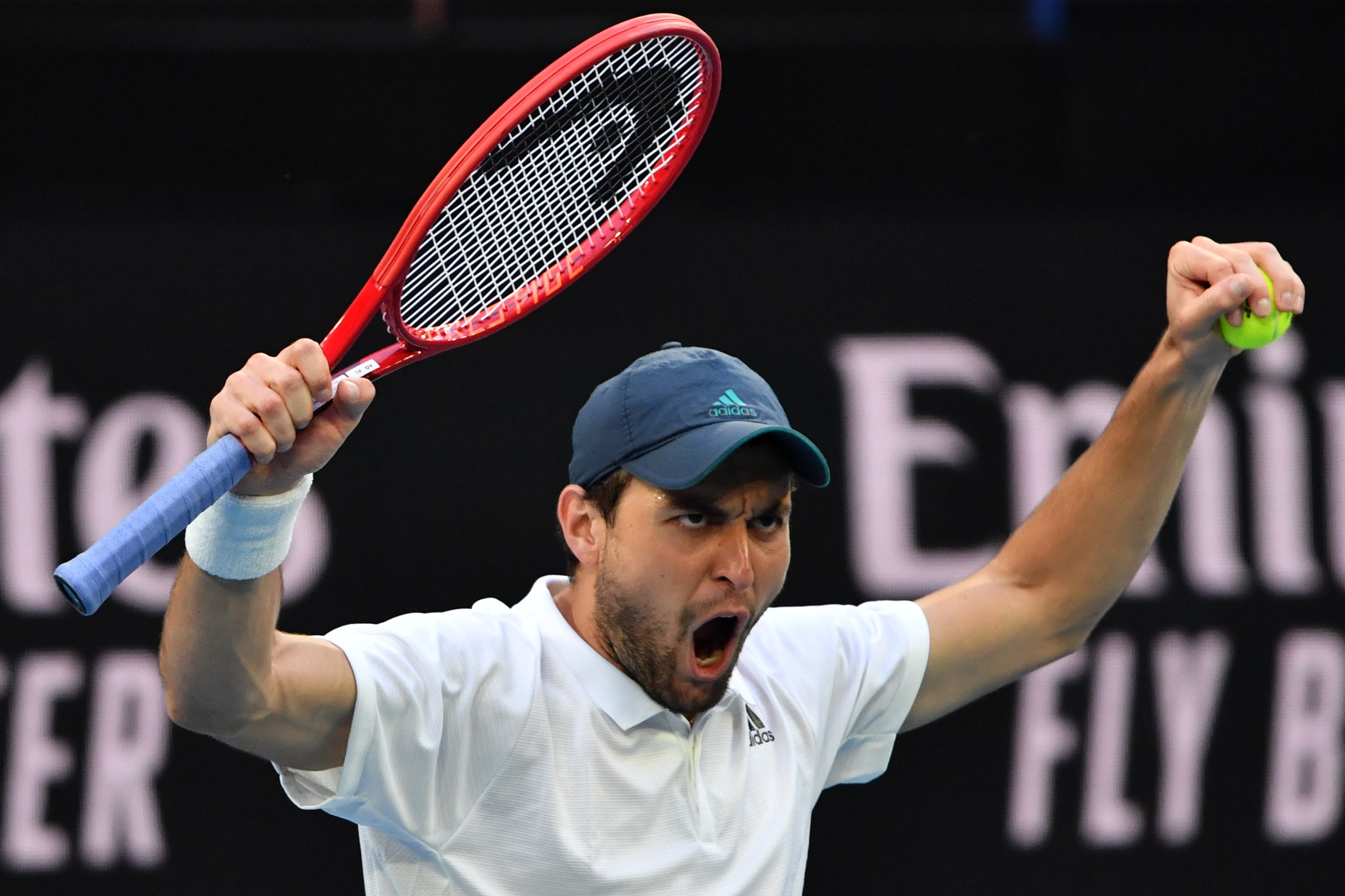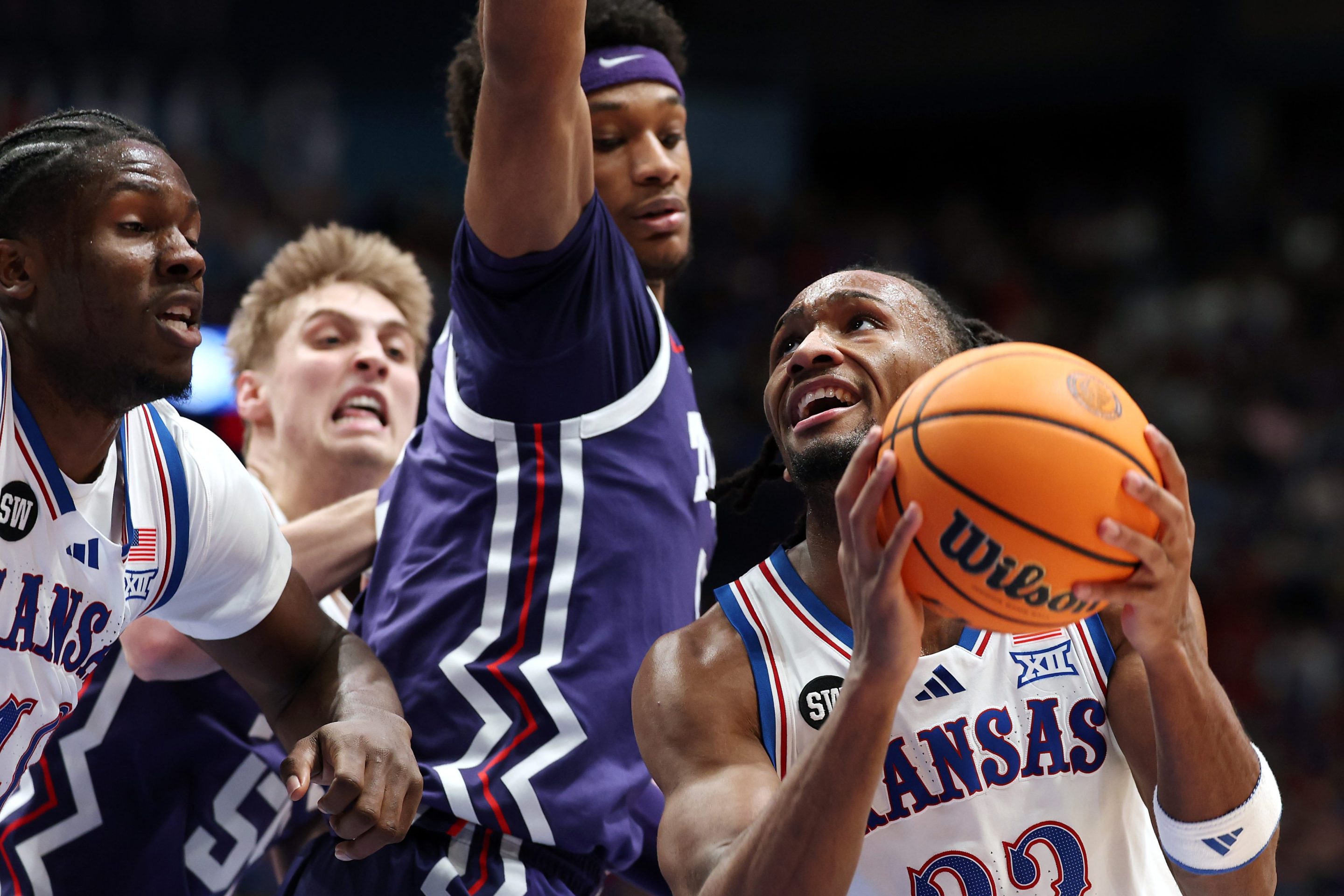Qualifiers sneak into the second week of a major on roughly the same cycle as a leap year. They've made the fourth round five times since 2000. However, they historically have not done so while playing like the reincarnation of prime Marat Safin the entire time.
After a busy night on the men's tour—one where Nick Kyrgios lost after going up two sets and seeing break points on No. 3 seed Dominic Thiem, and No. 1 Novak Djokovic gutted his way to a five-set victory while being unable to rotate his torso—of course it's time to talk about Aslan Karatsev. Let's assemble some facts about a man I have never watched play prior to this month, but cannot now envision losing.
Aslan Karatsev wears a hat. You would not know that by looking at the official tournament website, because he doesn't even have a photo there. The 27-year-old from Russia has never been to the fourth round of the Australian Open—nowhere close. Karatsev had played a total of eight tour-level matches heading into 2017 when a severe knee injury took him out for six months. Having briefly crept inside the top 200, he began to plummet; he would not play another tour-level match for three years.
When tennis resumed after a five-month suspension due to the pandemic, it brought an unambiguous upswing in Karatsev's fortunes. He won and would not stop winning. Karatsev has gone a total 32-6 in matches since August 2020, including an 18-2 record at the Challenger level, which is a notch below the main tour. Tearing through the second-tier competition vaulted him up to No. 111 in the world late last year. Still, at an age where most players peak, he had never played a match in the main draw at a major, until he entered the 2021 Australian Open through the qualifying rounds.
The newcomer did not waste a minute of this fresh opportunity. Karatsev scoured Gianluca Mager and Egor Gerasimov off the court in the first two rounds of the Open, at a clip of roughly 30 minutes a set, six sets in a row. That's impressive, but these were players ranked 96th and 79th respectively, within earshot of Karatsev's own 114 ranking. His third-round opponent belonged to a separate class of competition.
Diego Schwartzman was the first top-10 player Karatsev had faced in his career. That would be much tougher work—or at least it was supposed to be, because Karatsev manhandled the short king Friday in just under two hours, basically palming the top of his opponent's head until he won 6-3, 6-3, 6-3. Schwartzman has hung his career around a basic premise: hitting an impeccably clean ball from the baseline and running down everything the opponent sends back. He didn't get within six feet of a lot of these shots. Karatsev notched 50 winners to Schwartzman's five. He ate up the Argentine's weak serve through the match, winning 44 percent of return points, and snatched the second set with two straight untouchable returns.
Countryman Daniil Medvedev referred to Karatsev as a "secret weapon" when they teamed up to represent Russia in the ATP Cup earlier this month. At the time these seemed like kind words of praise for a lesser player, not premonitions of a new god-king, but Medvedev is known for understatement. In my lifetime experience (roughly three sets' worth) of watching Karatsev play tennis, it appears he can deposit the ball anywhere in the lower third of the court, at at least 90 mph, whenever he so chooses. Gerasimov, his second-round opponent, stood there and blinked as the ball went by him, over and over.
Evaluating a player's performance is tough, because it depends on variables as fickle as conditions, confidence, and opposing style. It's hard to pluck a player out of their actual match contexts and imagine hypothetical results against other players in the draw. That said: The results from the eye test just came in, and no working player is keeping up with this stranger's serve and strokes for three sets. He is, as they say, unconscious.
Karatsev's stamina remains a mystery, because he hasn't had to stand on court a second longer than necessary. Should an opponent try and find out? Probably not. Even avowed offensive baseliners would do well to shorten points and change pace, because they will not hang with this guy for long, if he can be this guy for much longer.
Redlining is an old tennis concept: maxing out on aggression when facing a more talented opponent, so as to have some outlier chance at winning the match. Redlining for nine straight sets (or several months) is a little harder to comprehend. If a player redlines long enough, do they simply become mid-aughts Safin? Or were local sporting authorities just waiting for the right 27-year-old volunteer to splice in the old champion's DNA? I want to be disabused of my current belief that Aslan Karatsev is the Australian Open favorite. It's a stupid belief. But you or Felix Auger-Aliassime will have to wrench it from my gnarled dead hands.






